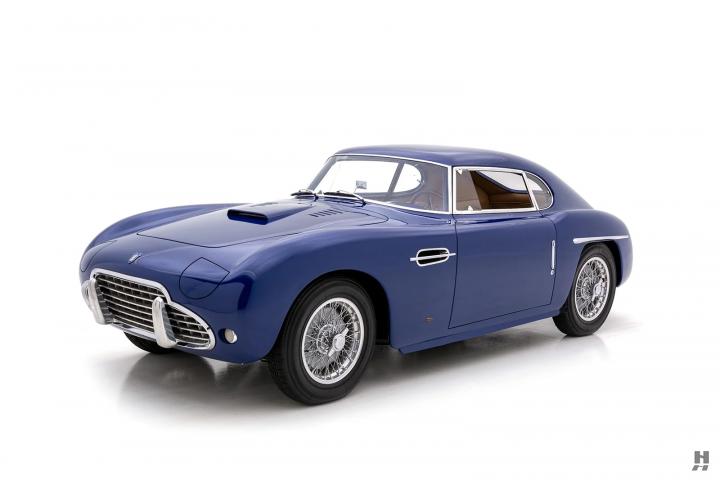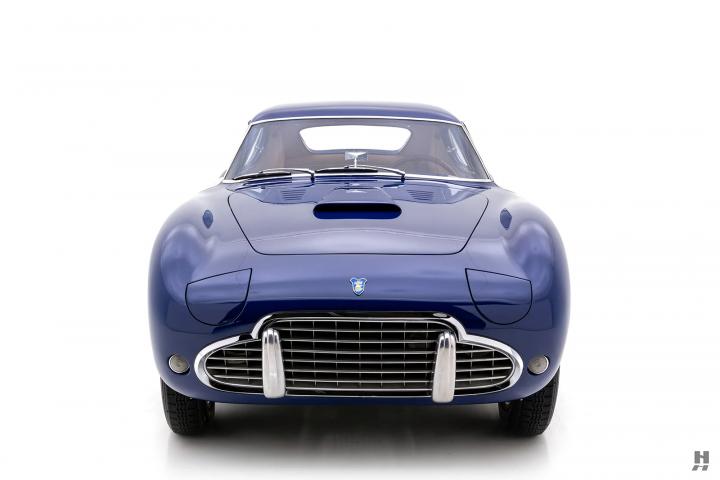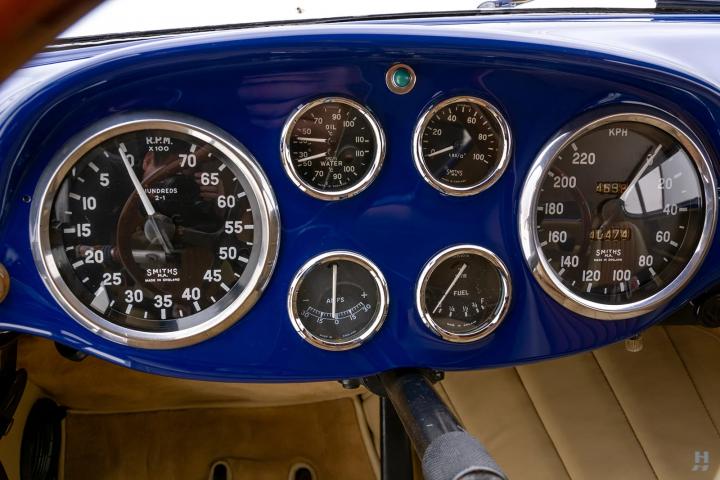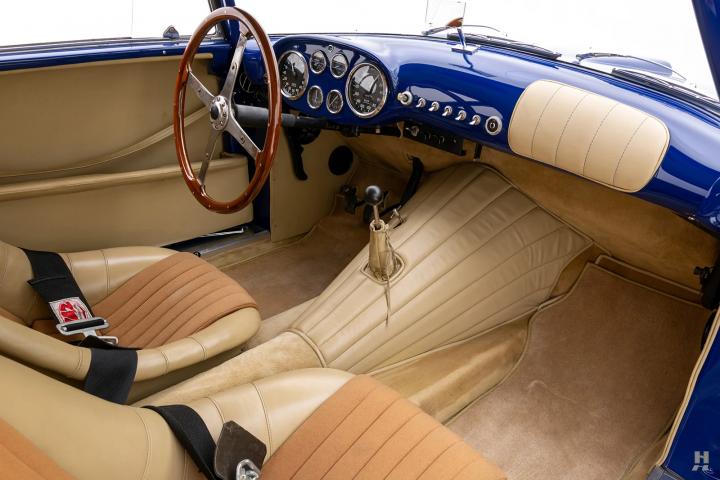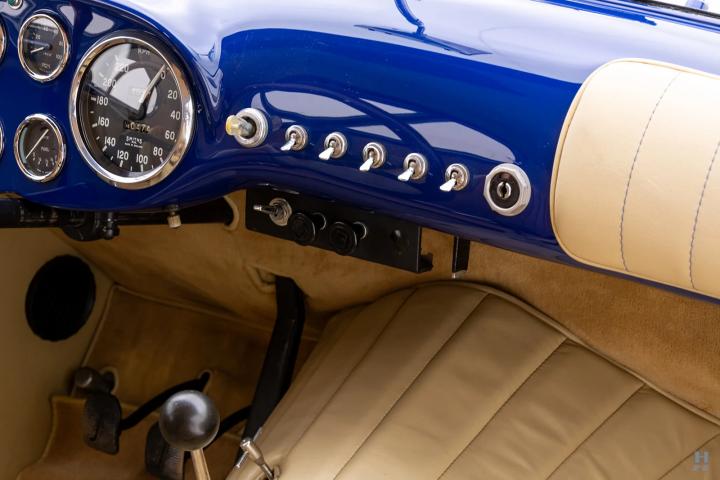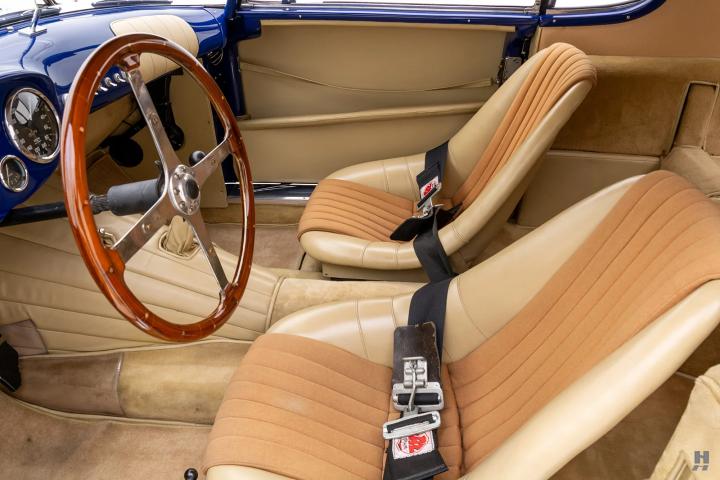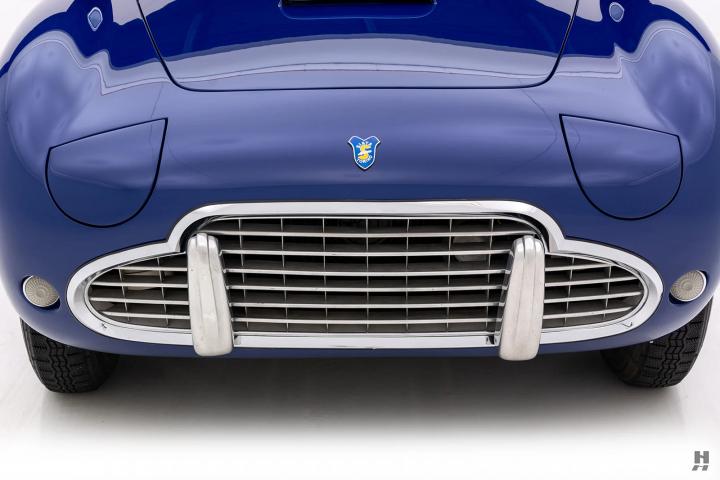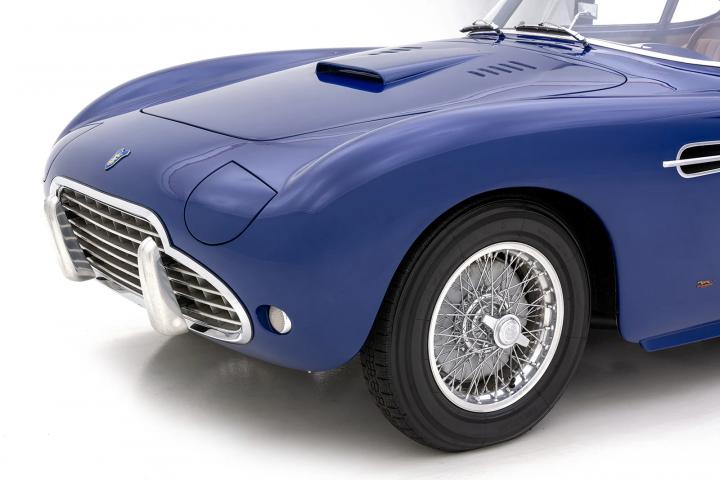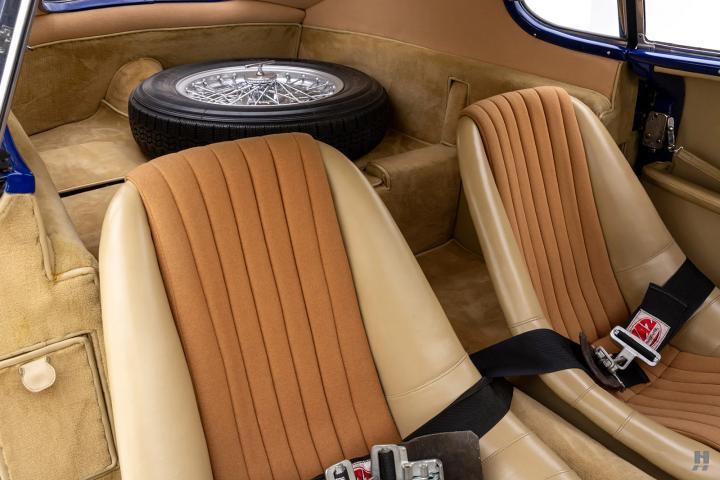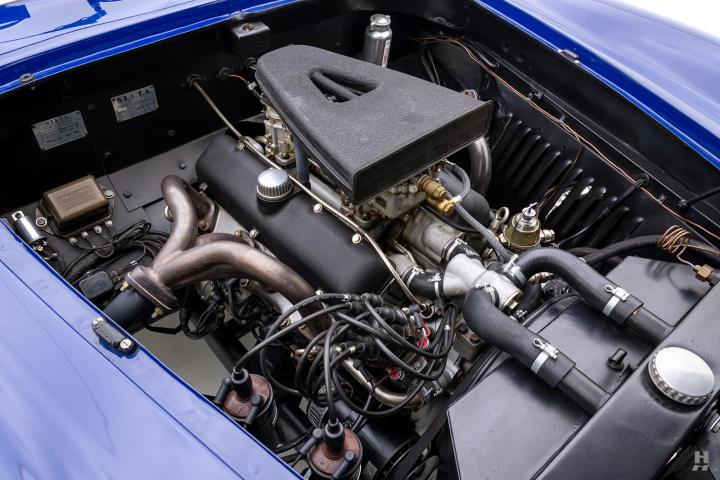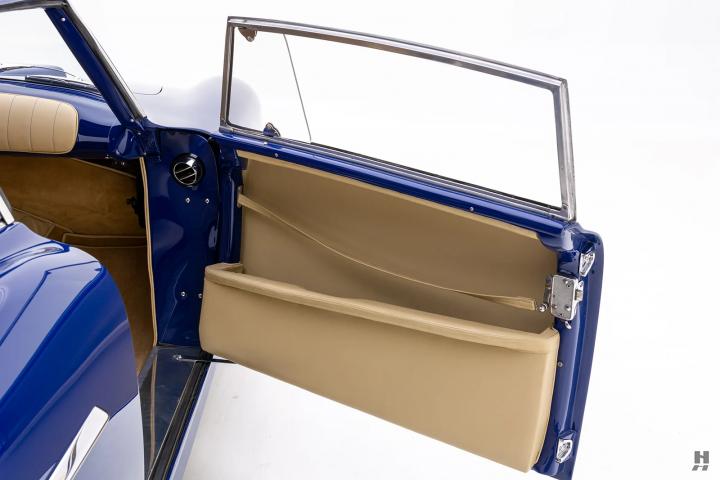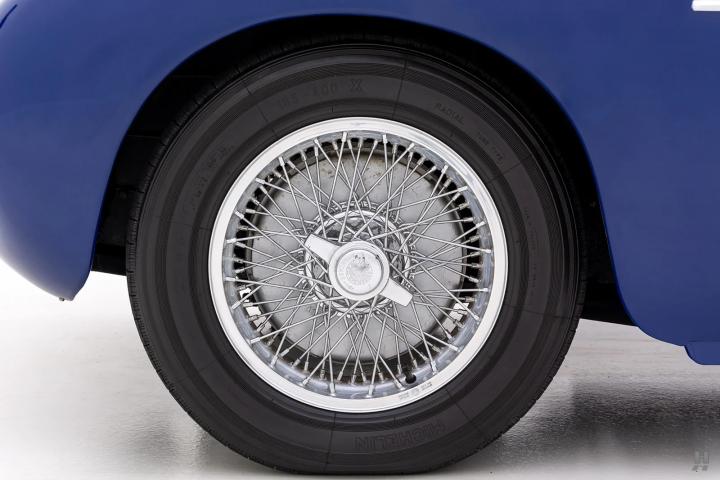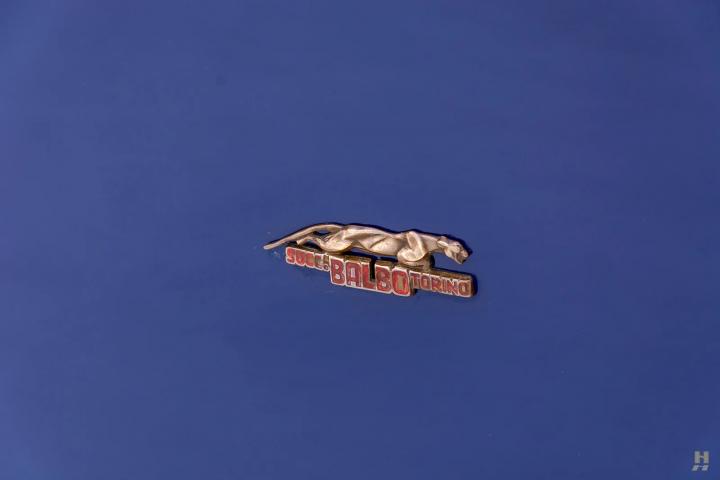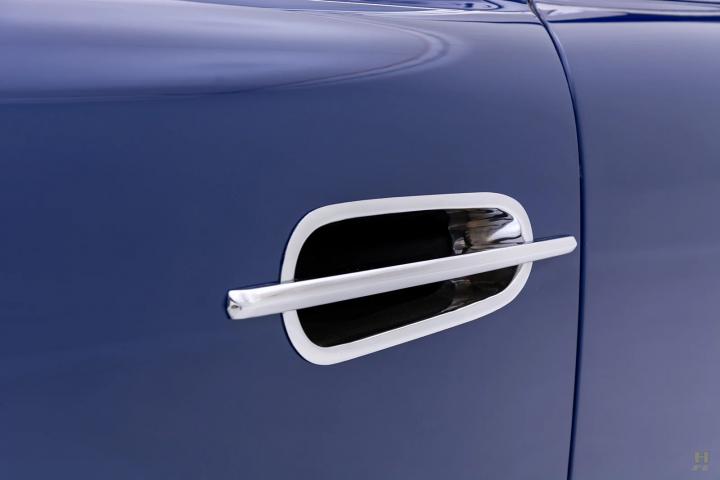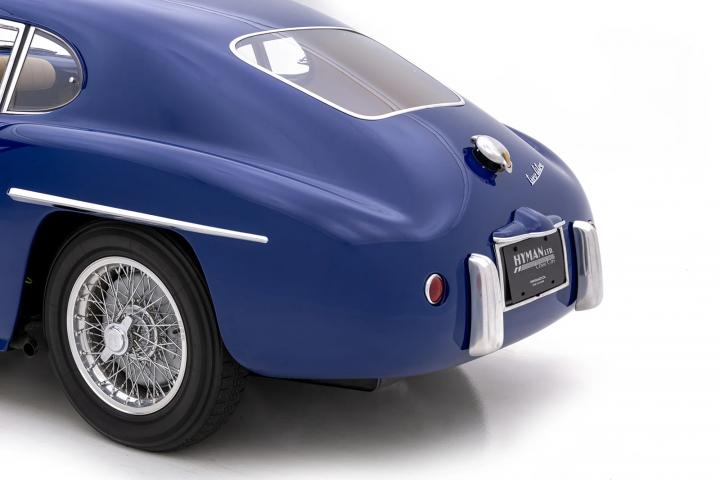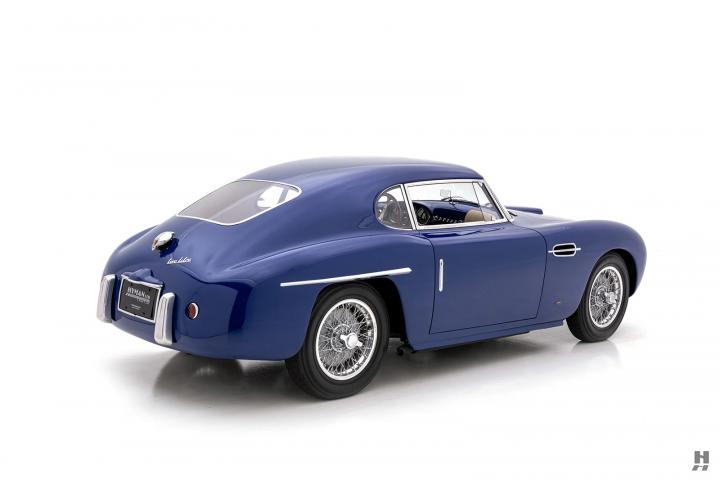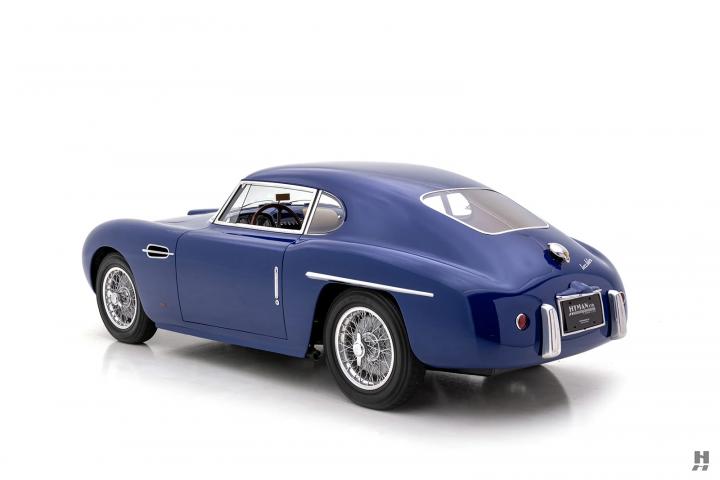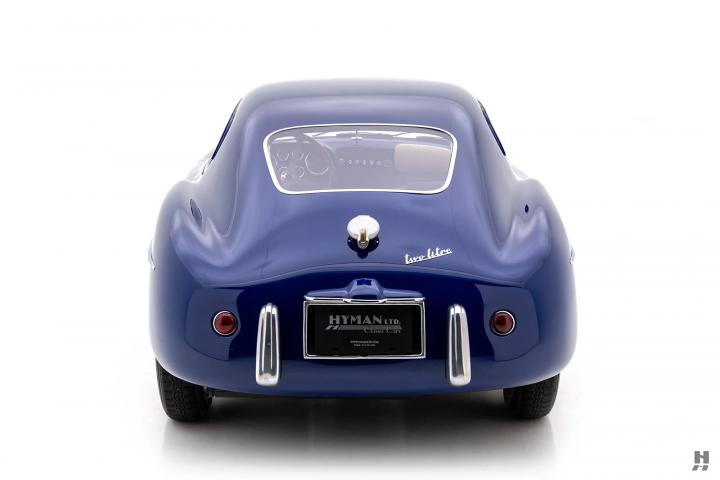1953 SIATA 208CS COUPE
For those unfamiliar, Siata (Società Italiana Auto Trasformazioni Accessori) was founded in Turin in 1926, focused on producing accessory and tuning parts, later gaining popularity for their collaborations with Fiat, creating special editions and tuning kits for various models. Ever the scrappy company, Siata came into its own after World War II manufacturing a small 48 cc engine, dubbed the “Cucciolo” or Little Puppy, that could be mounted on a bicycle near the crankshaft creating a rudimentary motorcycle. Especially popular throughout Italy, the profits allowed the company to begin producing their own automobiles — featherweight sports cars of their own design renowned for their elegance, performance, and innovative engineering, earning the company a dedicated following. Around the same time, Fiat conceived a plan to build a sedan for the American market. With the understanding that a 569 cc four-cylinder Topolino would not sell well in the United States, they settled on creating an all-new, 2.0-liter V8 engine with assistance from Siata. Unfortunately for Fiat, the sedan design wasn't well received but knowing the new, all-aluminum engine had potential, they placed it in their new 8V “Otto Vu” sports car. While very competitive, the 8V sold slowly in a post-war economy and, in a stroke of fortune, Fiat offered Siata approximately 50 of these excess 8V engines to power cars of their own design.
With a powerplant in hand, Siata went to work crafting specifications for their new 208S (Spider) and 208CS (Coupe). Technically advanced for its time, the 208 featured tubular ladder chassis construction with independent suspension all around. The 8V engine, with a dollop of Siata intake, camshaft, and carburetor tuning, produced around 125 horsepower put to the rear wheels through a five-speed transmission. Working with some of Italy's finest coachbuilders, Siata offered a 208S barchetta with hand-formed aluminum bodies from Michelotti and Carrozzeria Motto and the 208CS berlinetta with bodies first from Stabilimenti Farina and later from Carrozzeria Balbo. Both versions of the 208, by either coachbuilder, are a product of their era and method of construction and that is to say — achingly beautiful. During production, approximately 53 208 Siatas were sold, with just 18 of these produced as 208CS Berlinetta coupes. A mere eleven were bodied by Carrozzeria Balbo.
Even as a small, specialty manufacturer, Siata cultivated a remarkable network of dealers in the United States during the early 1950s. Notable figures such as Ernie McAfee, John Edgar, and Pavia & Co embraced Siata's offerings, while Tony Pompeo, operating Fergus Motors from 444 West 55th Street in New York, just a stone's throw from Columbus Circle, played a pivotal role in introducing Siata to American enthusiasts. Pompeo's story takes a fascinating turn when you delve into his diverse portfolio, encompassing not only Siatas but also Bandini, Stanguellini, Abarth, Cisitalia, and an occasional Alfa Romeo and Maserati, due to the niche nature of these specialty cars. Interestingly, Pompeo was known for exclusively importing competition-oriented vehicles. Legendary racer René Dreyfus shared that Pompeo had a reputation as a less-than-adept driver, entrusting the racing of his imported cars to individuals like Robert Grier, the inaugural owner of chassis number CS 071. Grier likely raced this Siata in events like the Floyd Bennett Grand Prize Cup, a 100-lap race at Brooklyn's Floyd Bennett Field on August 29, 1953, where it finished 18th among 43 competitors. Subsequently, Grier also participated in the Keene Mountain Hill Climb in upstate New York.
Ownership of this coachbuilt Siata coupe transitioned to Russell G. Sceli, another Northeast racer of that era. Notably, Alan R. Jones secured his SCCA competition license in CS 071 before moving on to pilot a Porsche 356 Carrera in 1959 and 1960. With this, the competitive chapter in the life of this exceptional Siata coupe reached its conclusion, but, as is often the case with unique automobiles, new opportunities awaited.
In September of 1959, the story of CS 071 took a fascinating twist as it found a loving home with Dr. Julius Eisenstark, a connoisseur of European sports cars. In a time when American roads were dominated by the allure of Detroit's automotive giants. Dr. Eisenstark was part of a local sports car club, and his journey led him to the discovery of this red Siata on a used car lot in Queens, New York. Love at first sight prompted the purchase, and on September 12, 1959, CS 071 found a new home with the Eisenstark family. The younger Eisenstark recollects that the car had previously been treated as a competition vehicle, designed for maximum performance on the track. Under Dr. Eisenstark's ownership, CS 071 underwent a transformative process, evolving from a bare-bones race car into a more civilized GT, suitable for leisurely drives. The doctor added interior upholstery, a heater with defrost, and enhanced engine cooling for the rare Fiat 8V powerplant as well as another layer of Italy's national racing color. When the 2.0-liter engine suffered a setback in 1966, it was meticulously rebuilt.
Dr. Eisenstark's passion for his Siata was evident in his mechanical tinkering and modifications, with a particular emphasis on performance. While the car was exhibited and showcased at events, the focus was always on enhancing its driving capabilities. Notably, CS 071 made an appearance on Jerry Seinfeld's "Comedians in Cars Getting Coffee" episode, adding a touch of Hollywood glamour to its already storied history.
In 2017, motoring plans took center stage as CS 071 made its way to Automotive Restorations Inc. in Stratford, Connecticut, for service. However, during a test drive, an unfortunate accident occurred, marking the car's first significant damage in 64 years. In response, comprehensive restoration efforts were set in motion to not only repair the Siata but to return it to its original show-quality condition, sporting the same colors it wore when it left Turin.
The meticulous restoration process entailed the repair of the original aluminum body, and the entire journey is well-documented in a 35-page file. The restoration team left no detail unexamined, even bringing in another 208CS to ensure precise measurements. With the suspension points confirmed as unaltered, the damaged right rear corner was scrutinized to create a ribbed body buck for accurately replicating the original aluminum contours that defined these small-batch, handcrafted Italian sports cars of their era.
While the localized body repairs progressed, the original matching-numbers Fiat 8V engine received a comprehensive rebuild, ensuring that the Siata would once again perform at its best. The restoration team identified the original medium blue color and meticulously matched it to perfection. By the autumn of 2018, the decision was made to enter the partially restored Siata in the 2018 Amelia Island Concours d'Elegance, a prestigious event held in early March. Despite the tight timeline, the Siata was fully prepped with panels and components test-fitted ahead of its paint application. The interior was tailored to provide a level of comfort more akin to a GT, reminiscent of Dr. Eisenstark's early enhancements to the car. With all exterior components, including the meticulously repaired and restored grille, lighting, glass, and trim, reinstalled, the Siata made its debut at Amelia Island, radiating in its original shade of blue as seen in the 1950s. The judging panels recognized the historical significance of the car and the quality of the restoration, awarding it the Best in Class – Sports and GT Cars (1951-1956).
Since its restoration, the Siata has not been confined to a static existence but has been joyfully driven by the Eisenstark family. As Walter Eisenstark puts it, "it doesn't like to be driven slowly or conservatively. It needs to be driven with somewhat of an aggressive attitude. Once you get moving, you can't sit back and relax when you drive the car." Sage advice from someone who has had a deep connection with the car since a young age and has been its dedicated caretaker since the late 1980s. In 2022, this exceptional Siata returned to the illustrious Pebble Beach Concours d'Elegance for the first time in 31 years, participating in a special Otto Vu class and the Tour d'Elegance. Now, just six years after its restoration, this rare example of coachbuilt Italian craftsmanship seeks a new owner outside the Eisenstark family for the first time in 64 years. It represents a unique opportunity to acquire not just one of the six remaining Balbo Siata 208’s but an example that has been beautifully restored, embodying the cherished legacy of a devoted family.
Offers welcome and trades considered
$1,245,000
STOCK NUMBER 7636
For immediate assistance please call us at +1-314-524-6000
